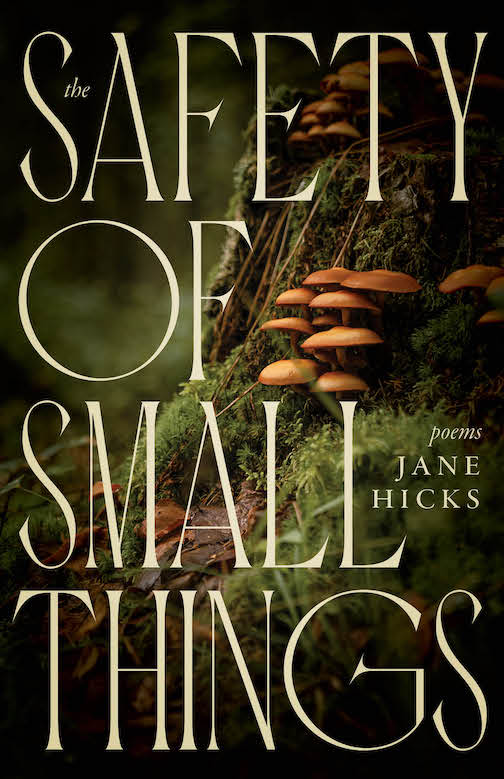Poetry in Motion
A young girl connects with poetry during difficult times
Caroline Brooks DuBois, who won acclaim for her debut middle-grade novel in verse about the events of 9/11, The Places We Sleep, tackles the aftermath of a devastating tornado and its effect on the community in Ode to a Nobody. Thirteen-year-old Quinn (or Quinnie) has always felt underfoot in her house, diligently avoiding any actions or behavior that would trigger an argument between her parents. Quinn’s older brother Forrest has gone off to college, so Quinn is alone in weathering the brunt of her parents’ messy separation.
 Quinn has always been a mediocre student. She is a good learner but often forgets to turn her assignments in on time, so her grades are suffering. The only class she enjoys is Ms. Koval’s English class, where they are learning about poetry for the month of April. When tasked to write an origin poem, Quinn describes how she got her name, explaining that her parents named her Quinn when they thought she would be born a boy. When they realized their mistake, her mother still insisted on Quinn, saying, “It’s gender-neutral,” whereas her father insisted on calling her Quinnie. Thus ensnared in her parents’ fighting since birth, Quinn has always struggled with her identity. For the origin poem, Quinn writes,
Quinn has always been a mediocre student. She is a good learner but often forgets to turn her assignments in on time, so her grades are suffering. The only class she enjoys is Ms. Koval’s English class, where they are learning about poetry for the month of April. When tasked to write an origin poem, Quinn describes how she got her name, explaining that her parents named her Quinn when they thought she would be born a boy. When they realized their mistake, her mother still insisted on Quinn, saying, “It’s gender-neutral,” whereas her father insisted on calling her Quinnie. Thus ensnared in her parents’ fighting since birth, Quinn has always struggled with her identity. For the origin poem, Quinn writes,
Quinn(ie) Jolene Nash—
is how I’ve been writing it lately,
so neither parent
can claim me as their victory.
That’s me.
Age thirteen.
Master of nothing.
Quinn not only feels like an incorrect piece to a puzzle with her family, she also fears for the strength of her relationship with her best friend Jack when a new girl named Jade moves to town and joins their friend group. Now it seems like Jade is better than Quinn at everything, and Quinn notes the way Jack has begun looking at Jade with admiration.
To make matters worse, an unexpected and devastating tornado hits one night, shattering her home and her neighborhood. In the hours after the storm passes, Quinn and her mother observe the damage. The destruction inside their house is jarring but seems manageable. It is when they open their front door that reality hits. Quinn says it’s
Like that old film
The Wizard of Oz,
in the landing-in-Oz scene,
where Dorothy opens
the door of her gray house
to reveal a new world in multicolor.
Their neighbors are seen tumbling out of their doors, dazed and uncertain. There is debris everywhere, shards of metal and wood, misplaced furniture (“a metal porch chair, / with a pillow still on it!”), even partial or complete roofs of houses.
 In the dual chaos within and without, Quinn must navigate the rebuilding of not only her home and her community, but her relationships with her friends, neighbors, and parents. Things that once seemed functional are now glaringly damaged beyond repair. Quinn and her mother relocate to a kindly neighbor’s house while theirs is being restored by Quinn’s father. Quinn starts to hope that maybe the near-death experience will bring her parents closer together, but when her father invites her to come live with him and his mother, Quinn realizes that some things can never be fixed.
In the dual chaos within and without, Quinn must navigate the rebuilding of not only her home and her community, but her relationships with her friends, neighbors, and parents. Things that once seemed functional are now glaringly damaged beyond repair. Quinn and her mother relocate to a kindly neighbor’s house while theirs is being restored by Quinn’s father. Quinn starts to hope that maybe the near-death experience will bring her parents closer together, but when her father invites her to come live with him and his mother, Quinn realizes that some things can never be fixed.
Ode to a Nobody is crafted to engage its young audience, and the innovative, insightful nature of DuBois’ writing will draw in even the most hesitant reader of verse novels. As April progresses, Quinn learns countless new ways of writing poetry, and her writing flourishes. Her perspective poem written from the point of view of houses is a moving depiction of bearing witness to the passage of time. The houses in the poem “swap stories with / misdelivered mail,” hide their residents’ secrets in basements and closets. After the storm, all these secrets are laid bare, and people marvel at what their neighbors have kept hidden. “Oh, but we knew!” say the houses in the poem, “We knew.”
DuBois’ writing has only gained depth over the years. The language is simple but elegant, and the worlds described are full of pain and wonder, love and loss. DuBois’ work is a perfect starter book for any reluctant reader of poetry, and it’s sure to convert them into lifelong lovers of the craft, just as Quinn’s English teacher Ms. Koval encourages Quinn’s transformation into a budding poet.

Abby N. Lewis is a part-time desk assistant for the North Knoxville Library, an adjunct English instructor at ETSU, and an academic support tutor at Pellissippi State Community College. She is the author of the poetry collection Reticent and the chapbook This Fluid Journey.


